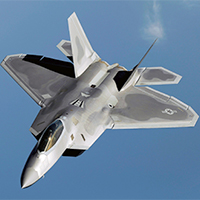China touts anti-stealth radar

America’s most advanced stealth fighter poses a great risk to China’s air defense network — and the military is going to great lengths to learn how to shoot one down.
China claims it has a new passive detection “radar” capable of identifying stealth aircraft, including the more advanced F-22 Raptor fighter based at Andersen Air Force Base on Guam.
The claims appeared in the last week of September in Chinese-language media outlets stating that the F-22 and Europe’s Neuron unmanned combat aerial vehicle are “obsolete” against China’s new DWL002 passive detection system.
Marketed by Beijing-based CETC International, the DWL002 passive detection system was displayed during the 9th China International Defense Electronics Exhibition in Beijing in May. It comprises one master reconnaissance station and two slave stations. The systems can be expanded to four stations and outfitted on trucks. The DWL002 has a detection range of 400 kilometers for fighter aircraft and 600 kilometers for airborne early warning and control aircraft, such as the US E-3 Sentry and E-2 Hawkeye.
At 400 to 600 kilometers, the DWL002 can cover all of Taiwan and the disputed Senkaku Islands in the East China Sea, but is not within range of US military bases on Okinawa. Nor can it reach the Philippines.
“Its range is limited by its parameter set and is most unlikely to achieve anywhere near 500 kilometers unless it is sited on a 10,000-foot mountain targeting aircraft at 30,000 feet,” said John Wise, UK-based radar analyst.
Despite the range problem, the Chinese media says the system provides a target capacity of 100 batches and a range of detectable signal types including pulse, frequency agility, pulse duration, tactical air navigation system, distance measuring equipment, jitter/stagger radar, and identification friend or foe.
Passive detection systems like DWL002 and YLC20 do pose a threat to low-observable aircraft, said Richard Fisher, a senior fellow with the US-based International Assessment and Strategy Center. “Passive systems like these simply listens for any electronic emission, which for the increasingly ‘networked’ style of American combat operations, ensures there will be plenty of signals to classify and locate targets.”